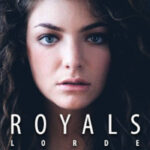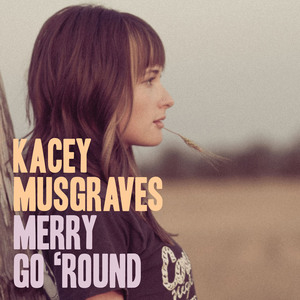 Pop music in the early 2010s felt like an arms race—bigger choruses, heavier electronic drops, flashier videos, and an endless parade of artists trying to out-luxury one another. Then in 2013, a 16-year-old from Auckland appeared with a song that did the exact opposite. “Royals,” the breakout single by Lorde, didn’t just reject the opulence that dominated the charts; it replaced it with stark minimalism, sharp observation, and an unmistakable sense of self-possession. Before most listeners even knew her real name, Ella Yelich-O’Connor was redefining what modern pop could sound like.
Pop music in the early 2010s felt like an arms race—bigger choruses, heavier electronic drops, flashier videos, and an endless parade of artists trying to out-luxury one another. Then in 2013, a 16-year-old from Auckland appeared with a song that did the exact opposite. “Royals,” the breakout single by Lorde, didn’t just reject the opulence that dominated the charts; it replaced it with stark minimalism, sharp observation, and an unmistakable sense of self-possession. Before most listeners even knew her real name, Ella Yelich-O’Connor was redefining what modern pop could sound like.
The rise of “Royals” wasn’t just surprising—it felt like a course correction. At a time when pop lyrics celebrated gold bottles, private jets, Maybachs, and high-end mythology, hearing a teenager calmly question the value of those fantasies was refreshing. The song’s appeal went deeper than its critique, though. Lorde wasn’t scolding mainstream pop; she was simply telling the truth from her vantage point—an ordinary suburban life grounded in bus rides, thrift stores, and a small circle of friends. That honesty, paired with its hypnotic production and Lorde’s haunting vocal tone, made “Royals” stand out instantly. The year it was released, it became an anthem for listeners who didn’t see themselves in the glossy worlds music videos tried to sell. Instead, they saw themselves in a young artist who understood how unattainable and disconnected those images really were.
“Royals” became a global hit not because it chased trends, but because it ignored them entirely. And in doing so, it reshaped the direction of pop music for years to come.
A Minimalist Masterpiece
At the center of “Royals” is its deceptively simple soundscape. Producer Joel Little built the track around sparse percussion, finger snaps, and a deep, elastic bassline. Instead of filling the space, he lets Lorde’s voice command it. The quiet tension gives every word a sense of gravity. In a musical landscape overflowing with maximalist EDM-pop, “Royals” chose the opposite path, proving that restraint can be more powerful than chaos.
This production choice also mirrors the song’s message. The empty spaces in the instrumental echo the emptiness of the lavish lifestyle Lorde critiques. The beat never fully erupts, because the song itself isn’t about reaching for extravagance—it’s about acknowledging its distance. The sound underscores her point: if you strip away the glamour, the fantasies sold by chart-topping songs feel hollow.
Lorde’s vocals deepen that effect. She delivers the verses with cool detachment, almost conversationally, then widens her tone into a ghostly chant during the chorus. Despite her youth, her delivery carries an old soul’s calm skepticism. It’s the kind of voice that doesn’t need to shout to be heard.
A Teenage Perspective with Adult Weight
Part of what made “Royals” electrifying in 2013 was how mature the writing felt coming from someone barely old enough to drive. But the strength of the song isn’t that Lorde sounds older—it’s that she sounds exactly her age, yet more self-aware than many artists twice her years. She wasn’t rebelling for rebellion’s sake; she was simply saying what she observed.
Lines like “We’ll never be royals / It don’t run in our blood” acknowledge the disconnect between the lives portrayed in pop culture and the lived experiences of everyday teenagers. But the song’s real power emerges in its refusal to accept envy as the default emotion. Lorde doesn’t resent those fantasies; she just has no interest in them. The real flex, if anything, is her sense of contentment: “We’re fine with this / We didn’t come from money.”
This groundedness made her voice unique in a genre trained to fantasize. She wasn’t trying to perform adulthood through luxury dreams. She was documenting real youth through clarity.
A Suburban Blueprint for Global Impact
“Royals” centers its perspective in the suburbs, a setting often overlooked in mainstream pop. While hip-hop, R&B, and pop frequently focus on aspirational narratives, Lorde turns her attention to simple, unglamorous reality. The suburbs she sings about aren’t sterile—they’re creative spaces carved out of boredom, friendship, and imagination. It’s a place where a group of teenagers can create their own culture separate from the fantasies they consume.
What resonated globally wasn’t just the critique of wealth; it was the celebration of modesty, authenticity, and community. In a world dominated by social media comparison, “Royals” became a rare pop song that made ordinary life feel empowering.
Cultural Critique Wrapped in a Hook
Despite its sharp critique, “Royals” never feels preachy. It’s catchy, immediate, and melodic. The chorus is structured like a chant, almost tribal in its rhythm, which makes it both memorable and communal. Listeners don’t just sing the lyrics—they join a statement.
The references in the verses—Cristal, Maybachs, tigers on gold chains—aren’t hostile or bitter; they’re observational. Lorde compares her reality to those images not to shame anyone, but to highlight the disconnect between entertainment and lived experience.
In many ways, “Royals” feels like a commentary on the idea of “cool” itself. The song challenges who gets to define it. If coolness is rooted in unattainability, Lorde argues instead for a version grounded in identity and independence. And it resonated powerfully.
Breaking the Mold for Young Artists
When “Royals” exploded in 2013, it immediately became a blueprint for a new kind of pop stardom. Labels, producers, and young artists started exploring minimalist production, introspective lyrics, and alternative aesthetics. The rise of artists like Billie Eilish, Olivia Rodrigo, and Tate McRae can be traced, at least partially, to the door Lorde kicked open.
But imitation aside, the song remains singular. It doesn’t sound like it was engineered for virality, nor does it chase trends. It feels like a product of instinct—an artist understanding her voice before the industry could shape it.
A Song That Belongs to Its Generation
“Royals” captured a generational sentiment: the growing awareness of wealth inequality and the absurdity of pop culture’s obsession with excess. For young listeners who grew up during recessions, student debt crises, and a shifting economic landscape, the traditional markers of success in pop songs felt increasingly disconnected from reality. Lorde articulated that disconnect with uncanny accuracy.
But the song isn’t pessimistic. At its core, “Royals” is celebratory. It celebrates authenticity, friendship, and the joy of creating your own world outside of unrealistic fantasies. Its message is less about rejecting wealth and more about embracing identity.
Legacy and Lasting Influence
More than a decade after its release, “Royals” still feels fresh. Its minimalist production didn’t age—it became timeless. Its themes didn’t fade—they became more relevant. And Lorde herself didn’t remain a pop outlier—she became a defining voice of her era.
The song’s chart accomplishments, including topping the Billboard Hot 100 and winning two Grammy Awards, only tell part of the story. Its real legacy lies in how it rewired expectations for what mainstream pop could be. It showed that honesty could compete with spectacle, that minimalism could stand next to maximalist anthems, and that a teenager’s perspective could speak for millions.
Even today, the first snap and bass thump of “Royals” feels like a subtle revolt, a reminder that pop music doesn’t need to be loud to be powerful. It can be quiet, thoughtful, and still shift culture.


